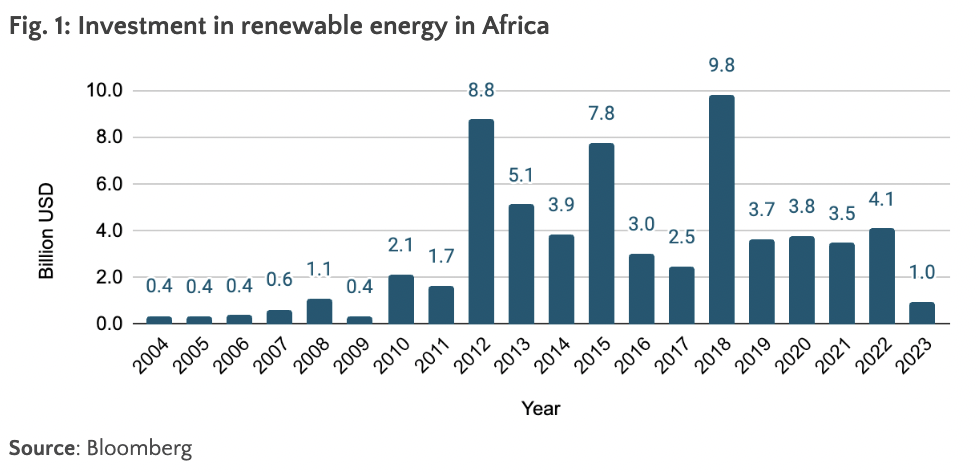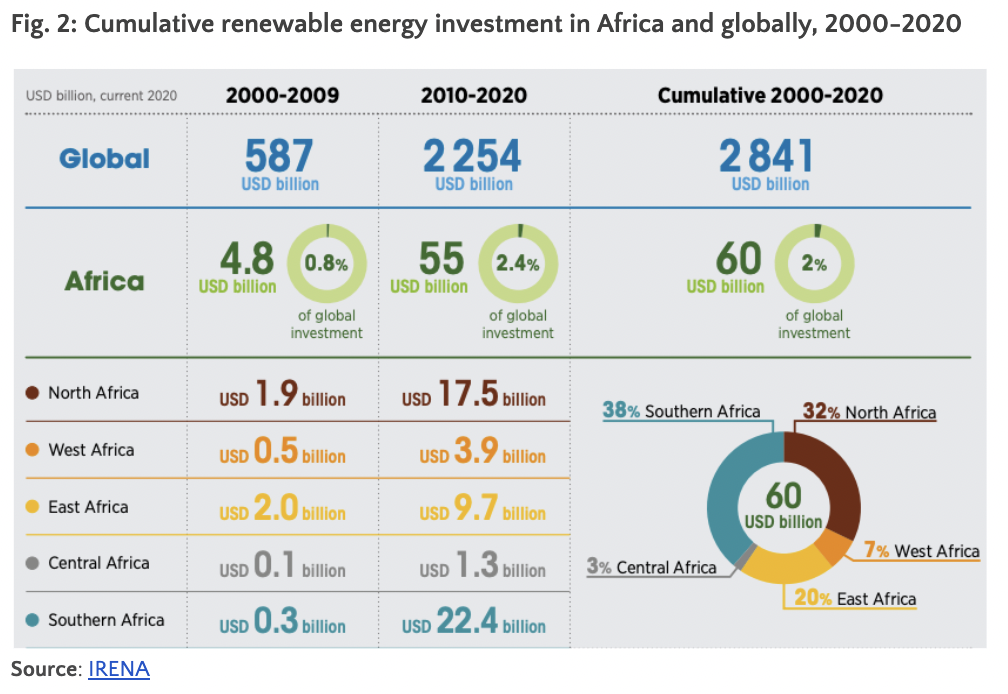Africa’s immense potential for renewable energy holds developmental opportunities for the continent and the world. Investments boost in Africa’s Renewable Energy potential are undoubtedly a central issue at the upcoming Africa Climate Summit 2023. The Ukraine-Russia war and the resulting energy deficiency in Europe and other global northern countries have seen a rush to exploit Africa’s natural oil and gas resources. The continent leaders should, however, maintain focus on increasing and shifting investments into renewable resources that hold a greater promise of sustainable progress for the continent and the rest of the world, long-term.
Abundant solar, wind, geothermal, and hydro resources lay the foundation for a sustainable energy transition. While Africa has the capability to produce a remarkable 40% of global solar power, its current contribution is a mere one percent. Similarly, tapping into just 0.01% of its wind power potential could provide energy 250 times over the continent’s demand, a potential yet to be fully harnessed.
Intriguingly, the present 7GW of developed capacity, though small in comparison, makes a substantial impact by offsetting around 10.7 million tonnes of carbon dioxide emissions annually – equivalent to removing 2.3 million passenger cars running on fossil fuels from the roads. Countries along the Rift Valley belt possess the potential to generate over 15GW from geothermal sources alone. Yet, of these nations, Kenya remains the only country to have fully embraced this resource.
Renewables Investment Gap
Renewable energy (RE) solutions are already making strides, particularly in meeting energy needs for households through localized innovations and mini-grid solutions. Approximately 493 million households, most of them in Africa, rely on off-grid solar solutions, generating an impressive market turnover of around $2.8 billion. However, with nearly half of Africa’s population still lacking access to electricity, there’s ample room for expansion.
Addressing this gap requires substantial investments. Africa needs $133 billion annually in clean energy investment to fulfil its energy and climate targets between 2026 and 2030. Presently, yearly investment in renewable energy on the continent stands at a mere $9.4 billion. Renewable energy investment in Africa lags far behind the world, causing a growing gap. While international renewables investment grow rapidly, focus has been in developed countries in Europe. Comparatively, Africa gets very little renewable energy funding.
A transition to green energy could even the playing field between traditional energy exporters and importers, reducing geographic disparities. While the renewable surge has predominantly impacted the electricity sector, innovations are now extending this transformation to transport, industries, and buildings. Investing in RE is not just about energy security but a sustainable and prosperous future.
Positive strides are evident. Kenya’s electricity generation in 2021 was 92.3% renewable, with geothermal, hydropower, wind, and solar leading the way. Morocco aims to increase its renewable power capacity to 52% by 2030, while Mauritius sets its sights on 35% from diverse sources like offshore wind, tidal wave, solar, and hydro.
“Renewable energy investments in Africa have a stronger business case than almost anywhere else in the world…Key is going beyond talking about just energy supply and focusing on energy demand to make the case for Africa as a preferred destination for energy-intensive industries looking to cut their carbon footprint. Investing in African solar gets you more bang per green energy buck.” Africa’s renewable energy potential is not only a chance to transform its own landscape but to inspire the world towards a sustainable and thriving future.
James Mwangi, Executive Director of Darlberg,







